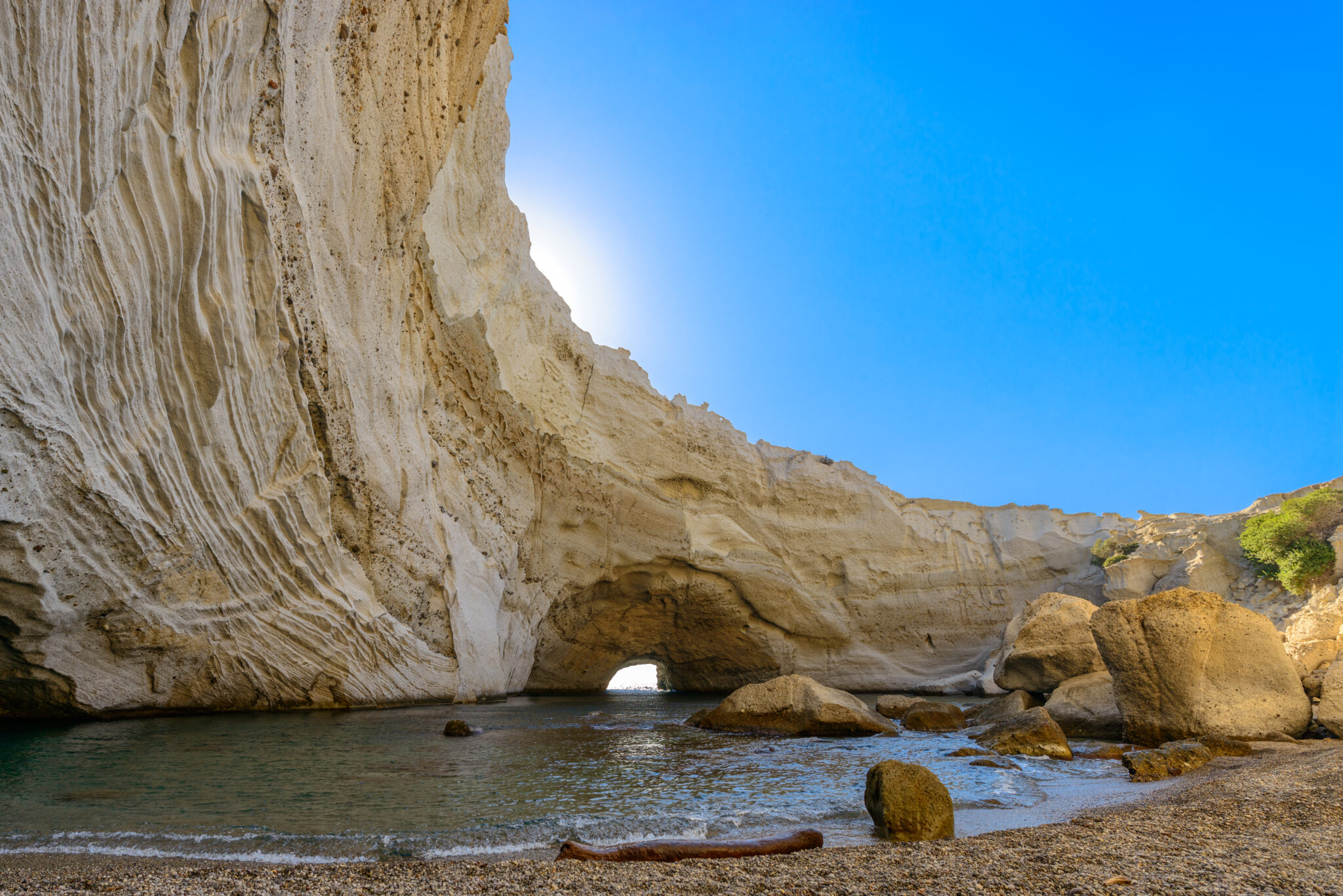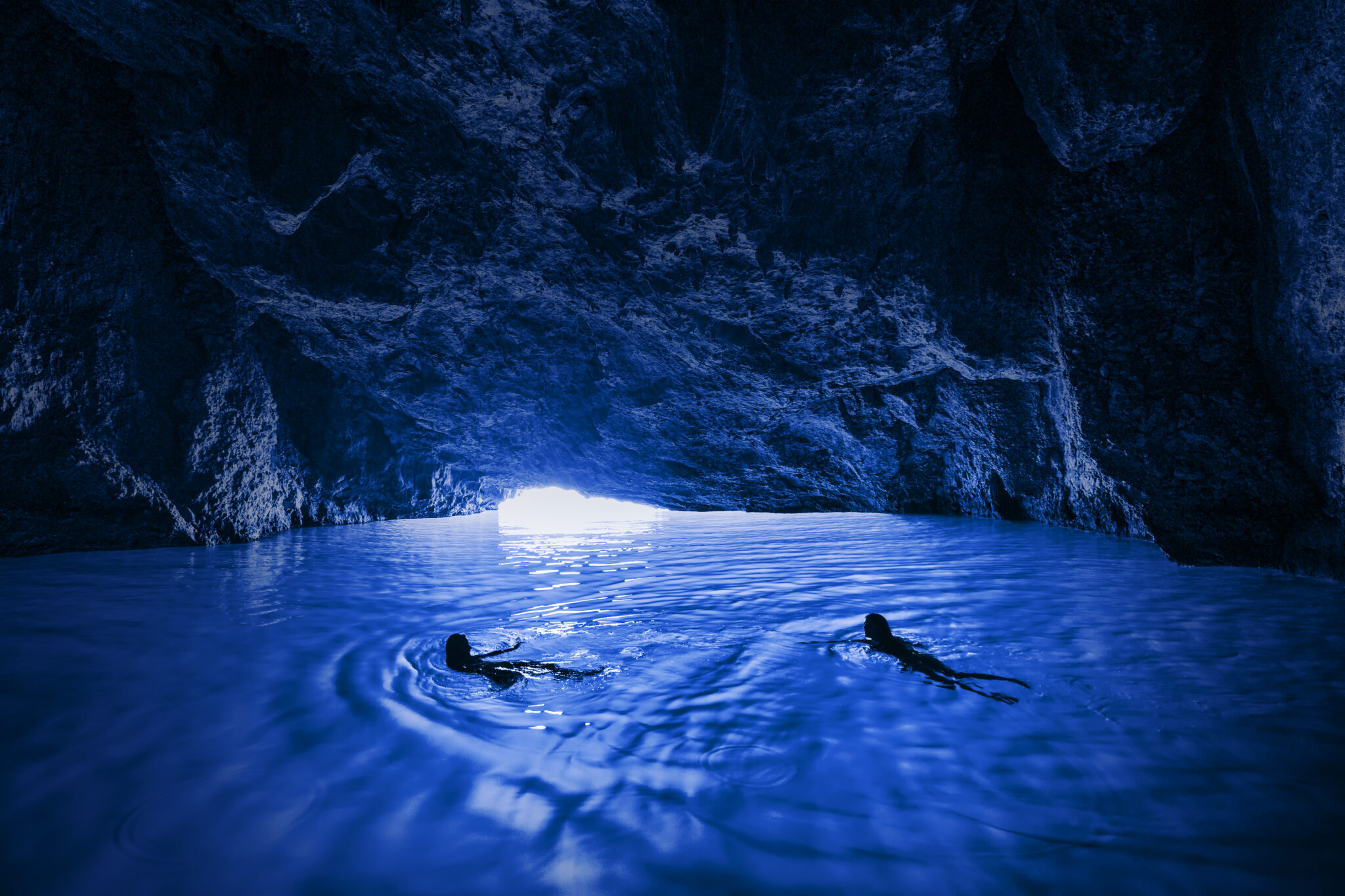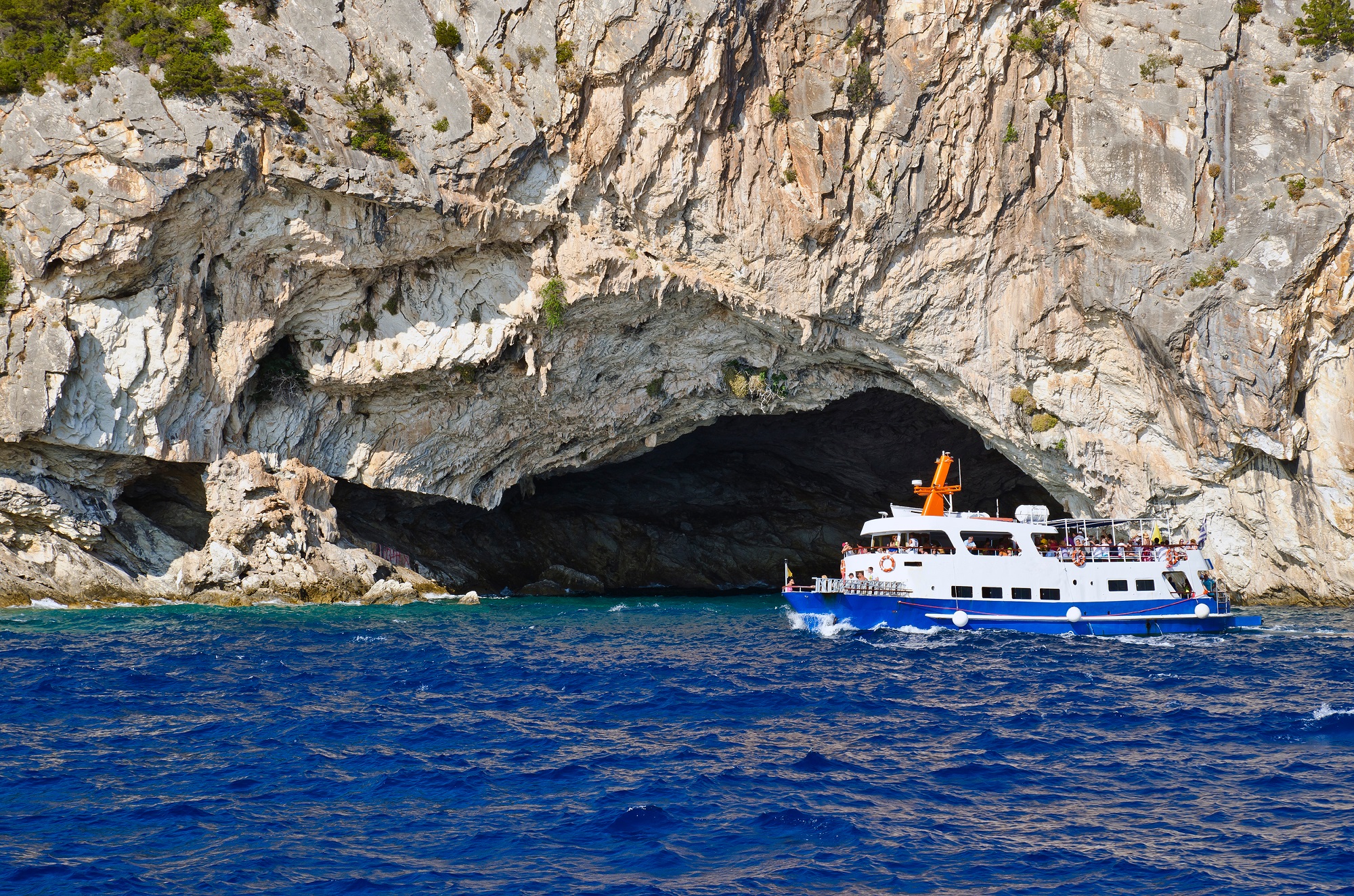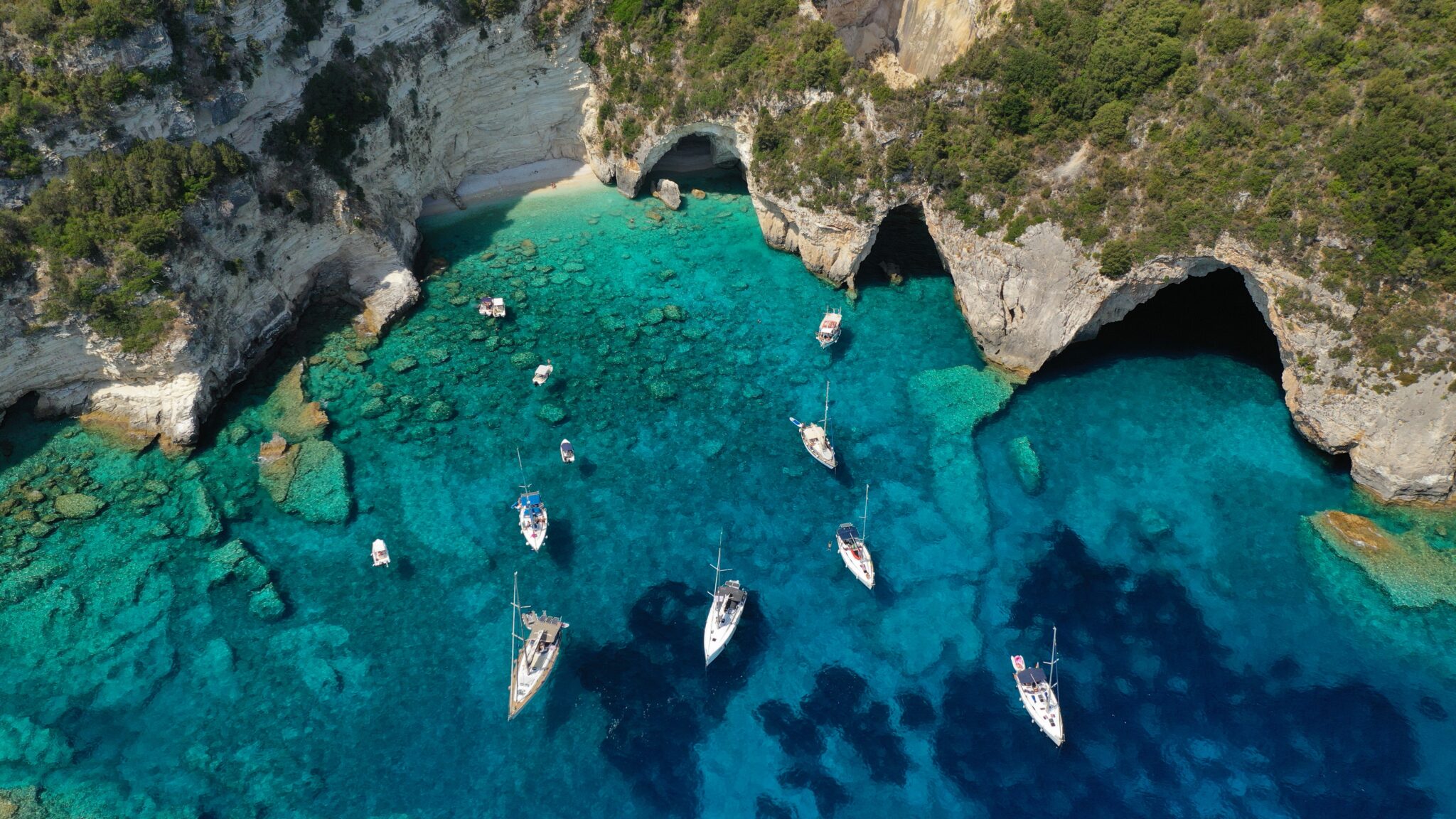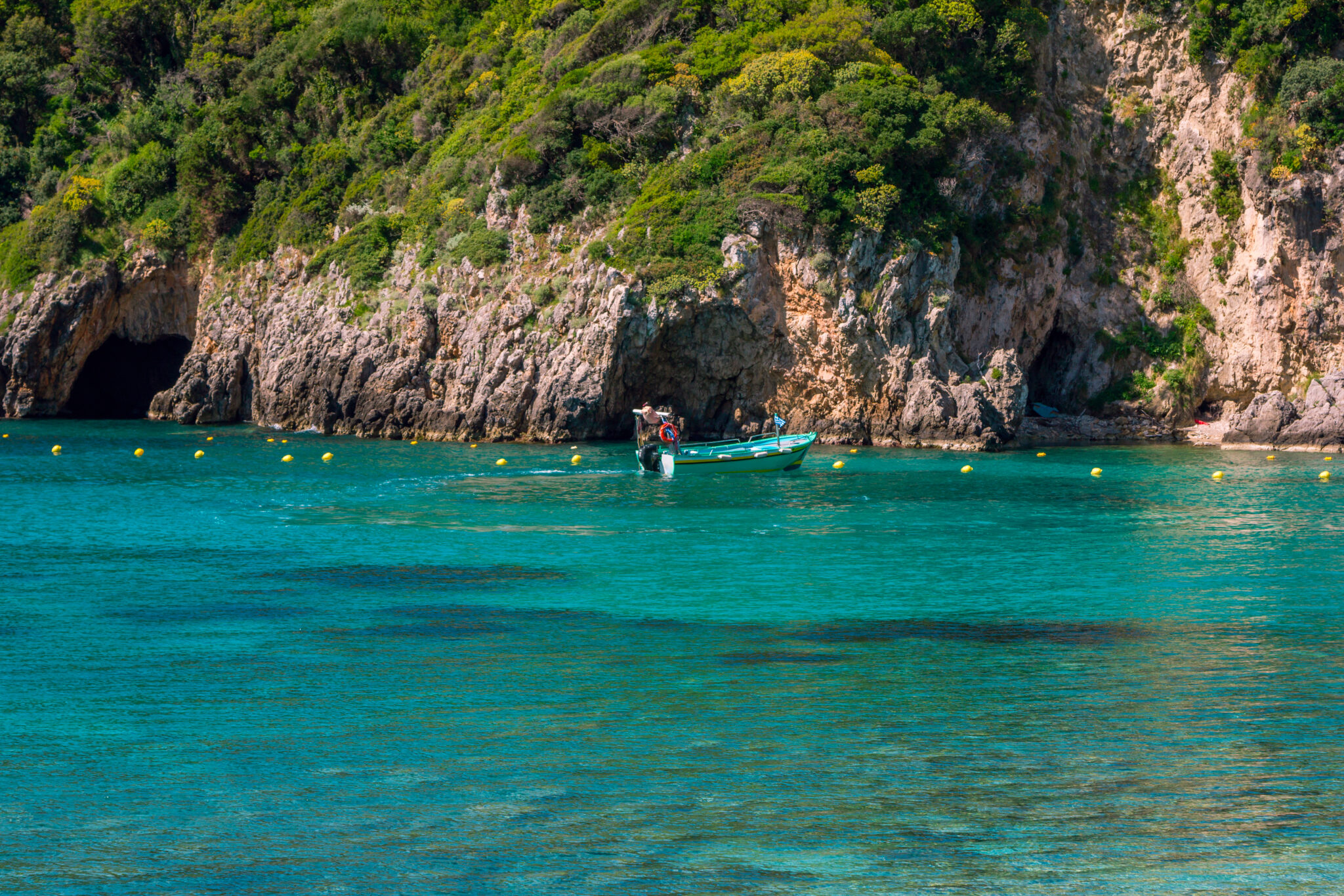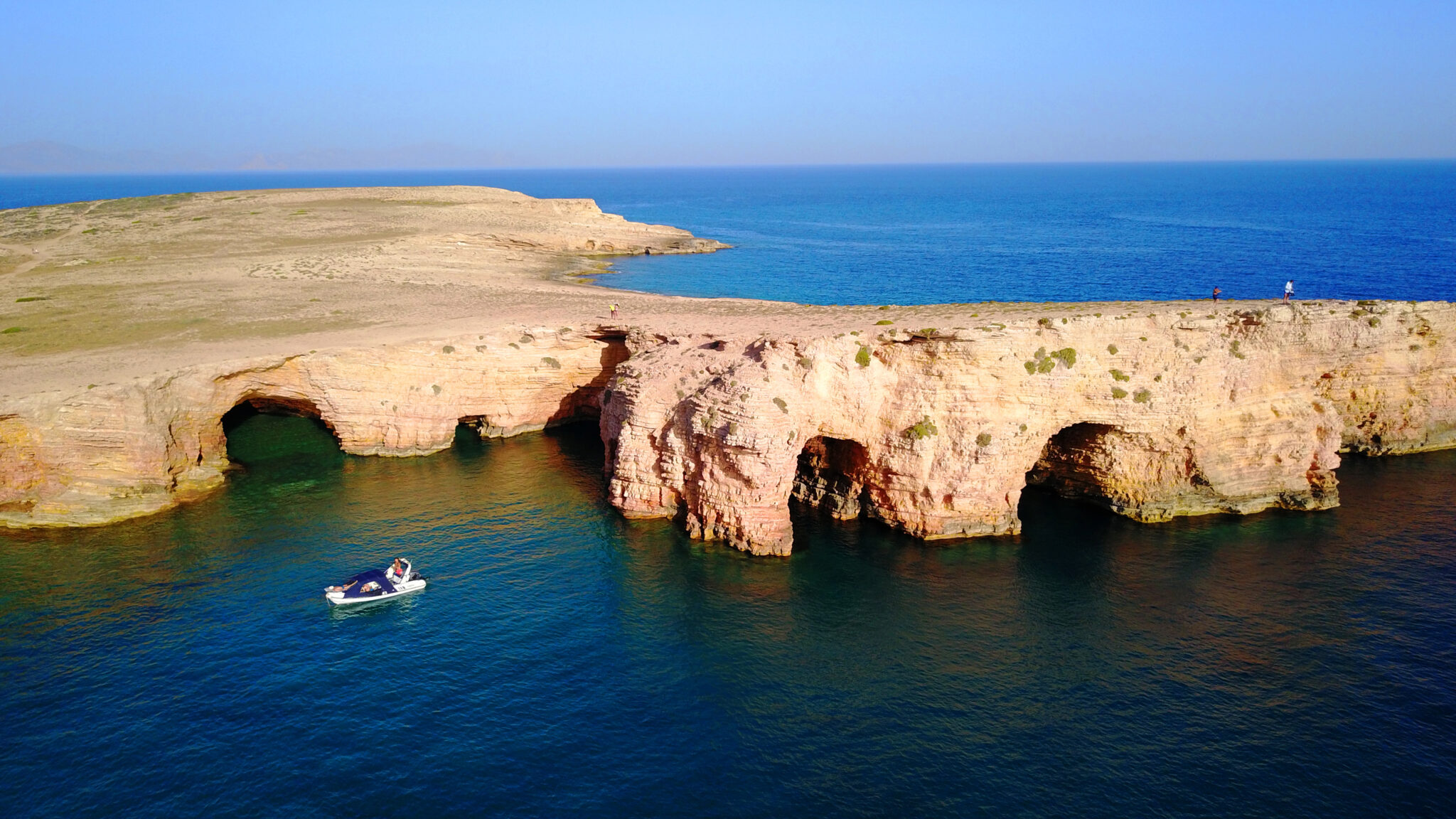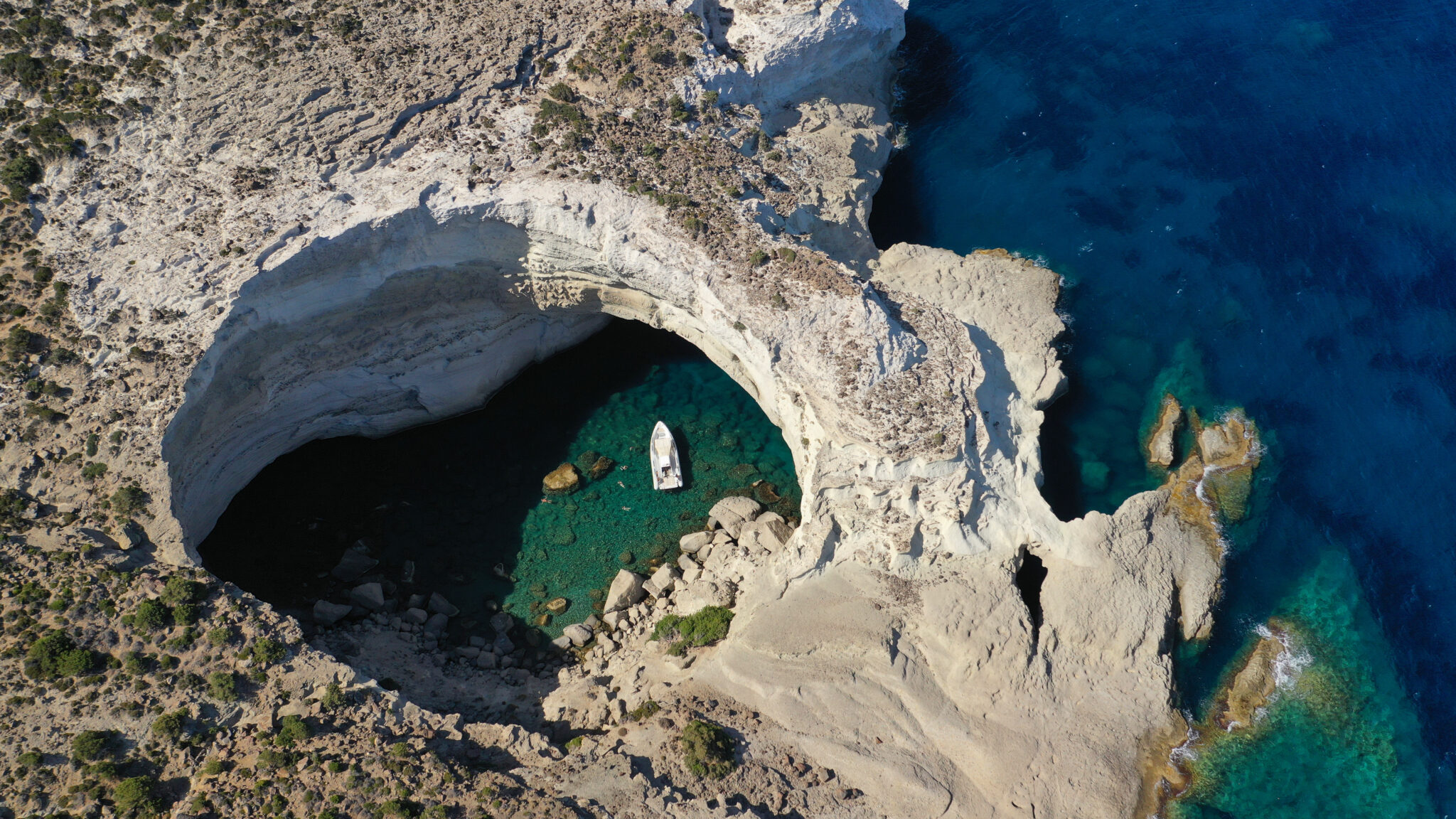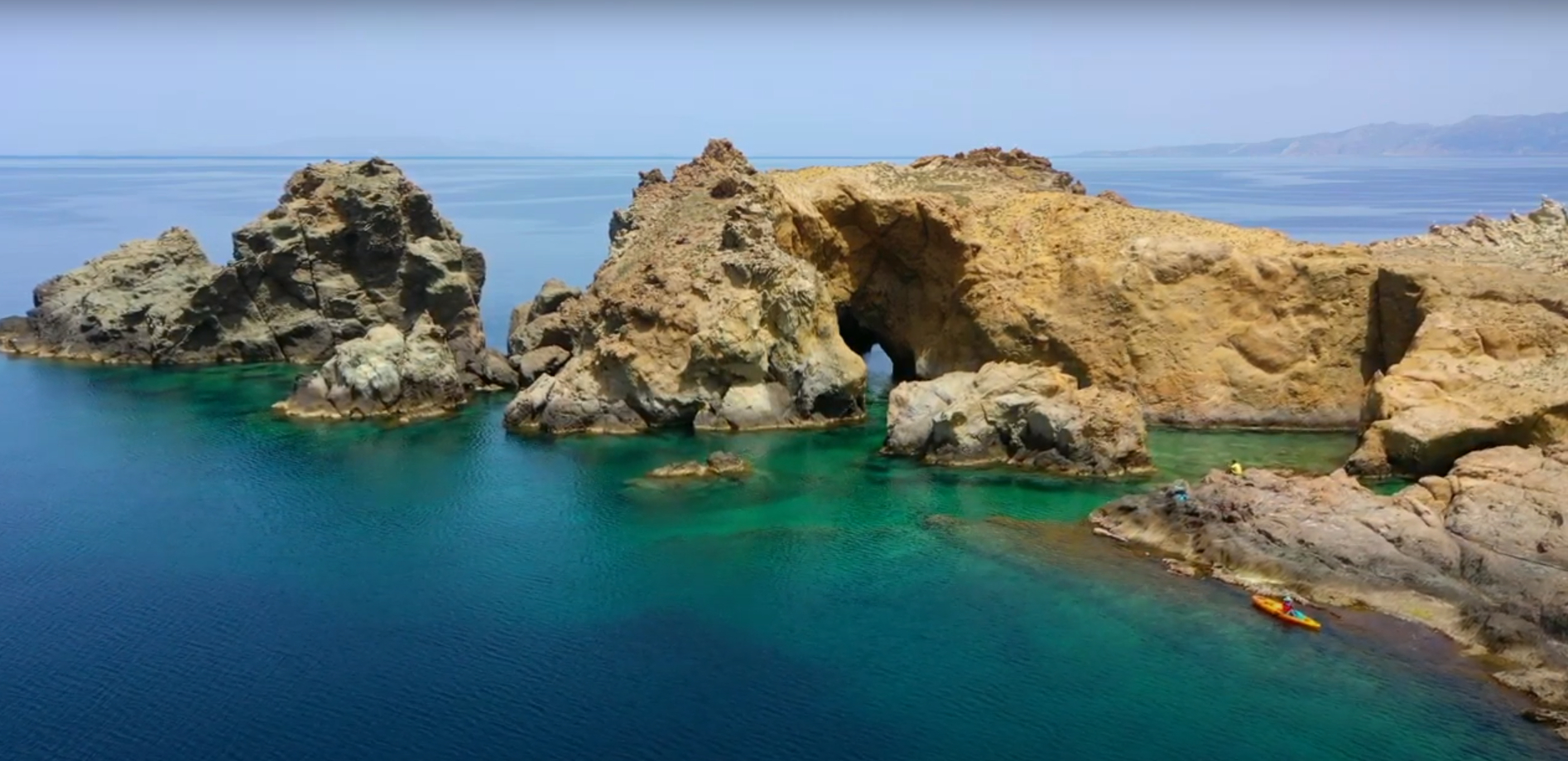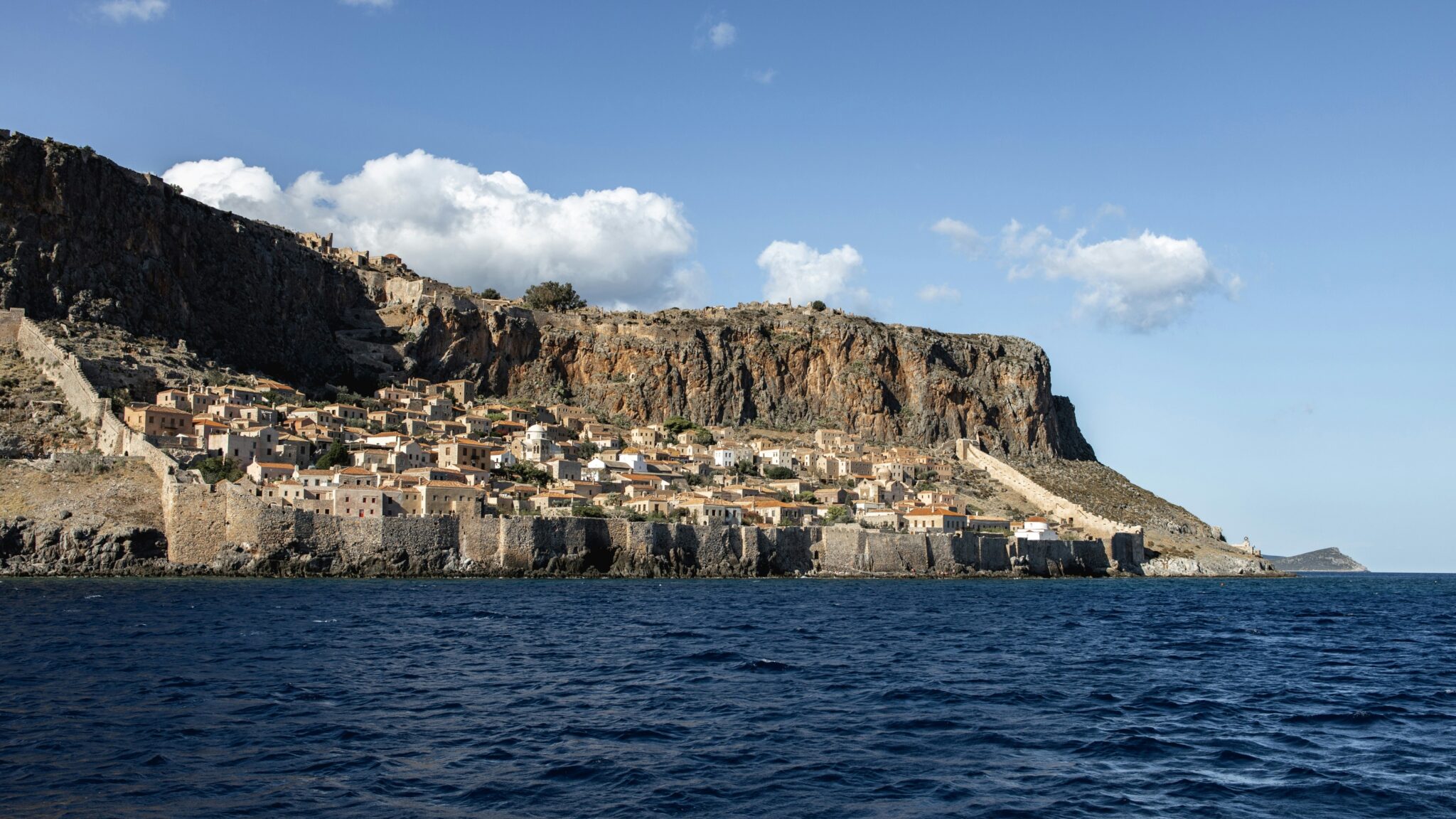Greece’s coastline is filled with amazing locales such as wonderful sandy beaches in the middle of nowhere, seaside pine forests with tree roots by the water, and pebble-covered beaches with superb, crystal-clear waters. A lifetime would not be enough to see all the beaches on offer. In addition, sea caves within spectacular rock formations make the coastline even more impressive.
Many of the country’s islands feature incredible sea caves really worth discovering. Take a boat tour around one of these islands, or rent your own boat and visit any sea cave you wish to see. The beauty is abundant, features including tall grey and white rocks, stalactites, and superb waters, some of these rich blue, others transparent and turquoise.
Galazia Spilia, Kastelorizo
The southeastern side of Kastelorizo features an incredible sea cave, known as Galazia Spilia, meaning blue cave, and, alternately, Spilia Tou Parasta or Fokiali. This cave’s height exceeds 30 metres, its width reaches 40 metres, and its depth measures approximately 70 metres. The white colour of the rocks, the cave’s stalactites, and the water’s blue colour combine to create a magical setting that definitely needs to be seen.
If you do not have your own boat, small boats depart from Kastelorizo’s harbour to the cave. Though the entrance into this cave is short, the cavity’s height, upon entry, is remarkably high, reaching nearly 30 metres. The resulting echo inside offers atmosphere to the sound of the water. Taking a dip into the sea cave’s blue waters is a unique experience.
Hytra, Kythira
South of Kythira, directly opposite Kapsali beach, a small rock islet, Hytra, also known as Avgo, features a lovely sea cave at its southern section. The rocks beyond the cave are habitat for Eleonora’s falcons, a hawk-type species. Seals like to gather at the small beach inside the cave. If in Kythira, catch a boat from Kapsali to the cave. Be equipped with a mask for scenic diving. More adventurous visitors like to climb the rocks within the cave and dive into the water from high up. The waters are a rich blue colour, the underwater world is impressive, and the rocks, carved out by the sea over the ages, are imposing.
Papanikolis cave, Meganisi
Among the Ionian Islands, the most impressive sea cave is to be found at Meganisi, on the western side of this island. It is known as the Papanikolis cave, named after the Greek submarine Papanikolis that used the location as a place of refuge during World War II. The cave is more than 100 metres long and roughly 60 metres wide. The back of the cave features a tiny beach, ideal for relaxed swimming. The waters inside the cave are incredible – blue and transparent. Stalactites hang from the ceiling, while studies suggest the cave was inhabited during antiquity.
Gravves, Paxi
Also among the Ionian Islands, but further north, Paxos features almost thirty sea caves, locally referred to as “gravves”, on its western side. They are all endowed with amazing turquoise waters, some have small sandy beaches, the waters at some are extremely deep, while the heights of certain caves reach as high as 200 metres. Take the boat from Gaios, Paxos’ harbour. Along the way, expect to hear tales and stories about pirates and gods. Also, locals claim that anybody who swims in the waters of the island’s caves will soon have children. Galazio Spilaio, comprising three interconnecting caves, is probably the island’s best-known cave, along with Ypapanti cave. Visiting the western side of Paxos on a private boat will enable you to enjoy the caves to their fullest. You can stop anywhere you please and swim for as long as you like.
Paleokastritsa caves, Corfu
On Corfu, the tall rocks with greenery around Paleokasritsa bay have produced miracles in the shape of small and large sea caves, there to be discovered for superb swimming in blue waters. Nafsika cave, the best-known of all the caves in the region, named after the daughter of the king of the Phaeacians, offers superb waters. But do not restrict your experience to this cave. Make sure to also visit Agios Nikolaos cave. Small boats offer transportation to these caves. They can also be visited on private boats for exploration at your own pace.
Xylobatis cave, Koufonisi
On the other side of Greece, among the Cyclades islands, Koufonisi, renowned for its gorgeous beaches, also has a reputation for its sea caves. At Pori, famous Gala beach features a small cave connected to the sea. The spot offers a tiny beach with white pebbles. The impressive Xylobatis cave is on the opposite side. A number of caves may be explored at the tall, almost vertical rocks of the area. One of these is open at both sides, like a sea tunnel, while another features a small beach at its far end, which reveals itself like a small oasis in the desert. These caves can only be reached by boat.
Sykia cave, Milos
The island Milos is filled with unique land formations. Sarakiniko, Kleftiko, Gerontas and Papafragas are just some of the scenic swimming spots on this island, offering countless options. At Sykia beach, one large cave is open at the top, which caved in, enabling the inflow of light and unparalleled beauty. Enter the small entrance with a dinghy. Bigger boats cannot get through. The towering white rocks, superb waters and sky view, from inside the cave, combine to offer a one-of-a-kind experience. One side of the cave features a small beach where you can lay out you towel, settle and enjoy the magic.
Gerakia cave, Kimolos
On the northern side of the island Kimolos, Gerakia cave, the result of volcanic rocks, the wind and sea, also offers abundant beauty. Gerakia cave is reached by boat or even canoe. The waters are shallow, enabling you to walk to the cave and marvel at the unique surrounding setting of tall rocks and lovely waters. Their seabed is mostly rocky.
Read also:
Grande Grotta: Impressive cave offers one of the Aegean Sea’s most magical sunsets



